Studio3 Wireless Headphones by Beats
Connected on January 9, 2021
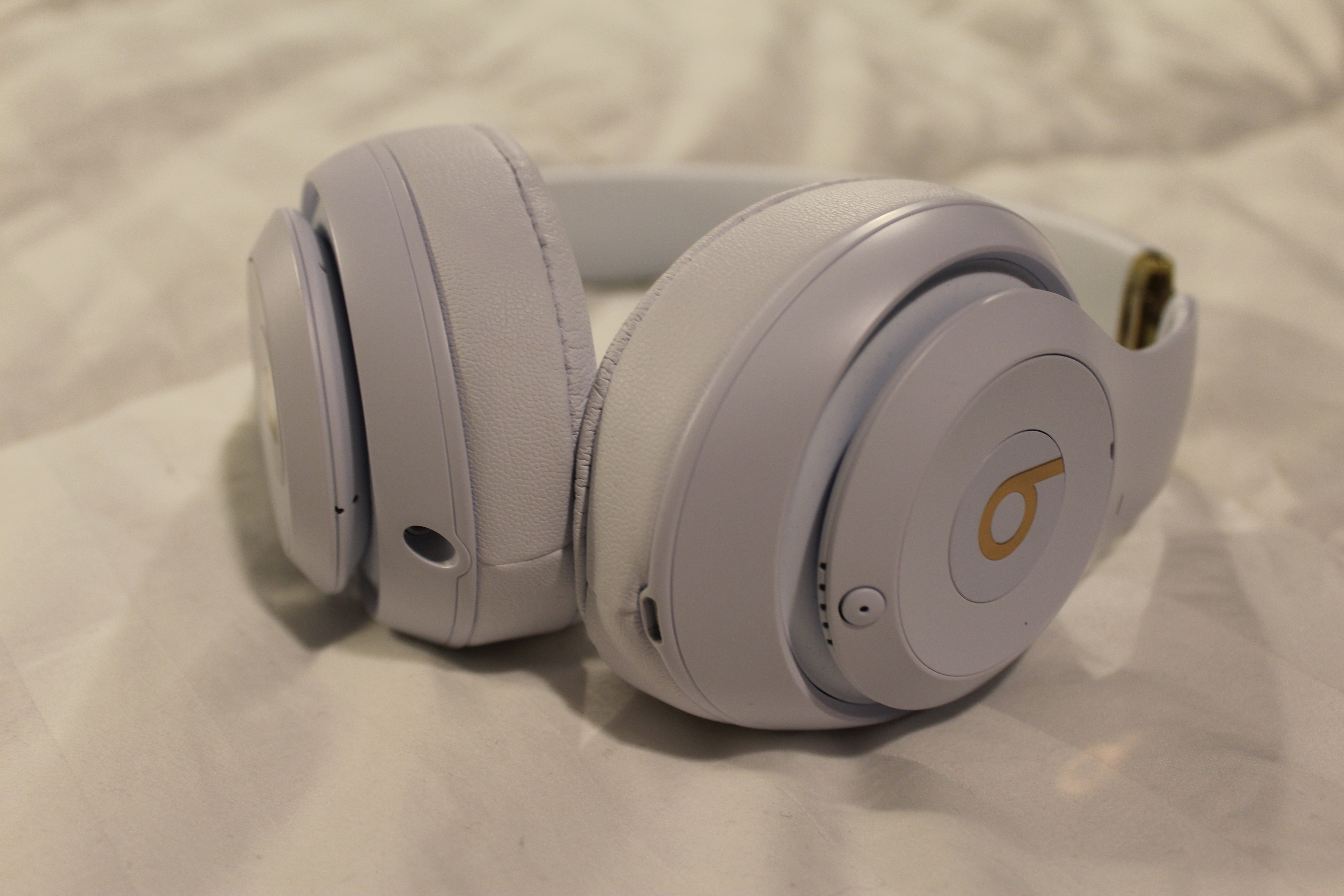
I love music. There was a time when, as a kid, I simply didn’t listen to it, and, looking back, the years in which I didn’t actively listen to music were some of the roughest years of my childhood.
As I entered my teenage years, music began to dominate my life, though. I fell in love with — and obsessively pursued — bands like The Eagles, Nine Inch Nails, Nirvana, and Pink Floyd. And, along the way, I became interested in headphones; specifically, in finding a pair of good-sounding, comfortable headphones that I can wear when I want to do some serious listening.
Over the years, I’ve owned and abandoned a number of them, usually with the same complaint: ear fatigue. I don’t think I have unusually large ears, or any odd protrusions, but I do have what doctors clinically refer to as an “enormously ginormous head,” and it’s been a lifelong challenge to find earphones that fit comfortably.
My most recent pair of headphones are the Beats Studio³ Wireless headphones. I bought them for three reasons:
I am firmly entrenched in the Apple ecosystem, and the Studio³ Wireless headphones come equipped with the Apple W1 chip, which enables the headphones to effortlessly connect to, and switch between, the Apple products I own, be they my Apple TV, MacBook Pro, iMac, iPhone, iPad Pro, or Apple Watch.
As you are going to notice with my continued articles and product reviews, I have a thing for wireless tech. Cable clutter is something I actively seek to eliminate, to varying degrees of success (which you will see when I publish an article demonstrating my home workspaces). The Beats Studio³ Wireless headphones offer 22 hours of wireless listening on a single charge (or 40 hours without Active Noise Cancellation), and it is possible to take it without its charger on trips and have no worries of running out of juice.
I’m a sucker for nice looking things that cost too much, and the Beats Studio³ Wireless headphones are gorgeous, albeit pricey for their performance level.
Before I start with my actual review, I would like to clarify two points.
One, I am not an audiophile. I love music. When I was younger, I worked in radio and spent a few years studying sound, but I am hardly an expert. And, as a 41-year-old, I didn’t get this far without damaging my ears along the way, which means that there very well may be some nuances to how headphones deliver sound that literally are beyond my ability to detect.
Two, I am hardly an expert on design. I love nicely designed things, and I have opinions — so, so many opinions — about the things with which I interact on a daily basis, but I’m not a student of design and I cannot adequately communicate using design-related terms. I just don’t speak that language that well.
So, instead, this review will be from the perspective of your average, run-of-the-mill technology fanboy with quite possibly too much money and not enough good taste.
The Look
Confession — these are not the first Studio Wireless Beats I’ve ever owned. Point of fact, I’ve owned two previous iterations — the Beats Studio Wireless produced back when Beats was working in conjunction with Monster, and the Beats Studio 2 Wireless headphones that were produced around the time Apple purchased Beats.
The Studio³ Wireless very closely resemble the second iteration of the headphones, with a slightly different colour palate. My Studio2’s were white and red with a silver hinge; these ones are simply white and gold.
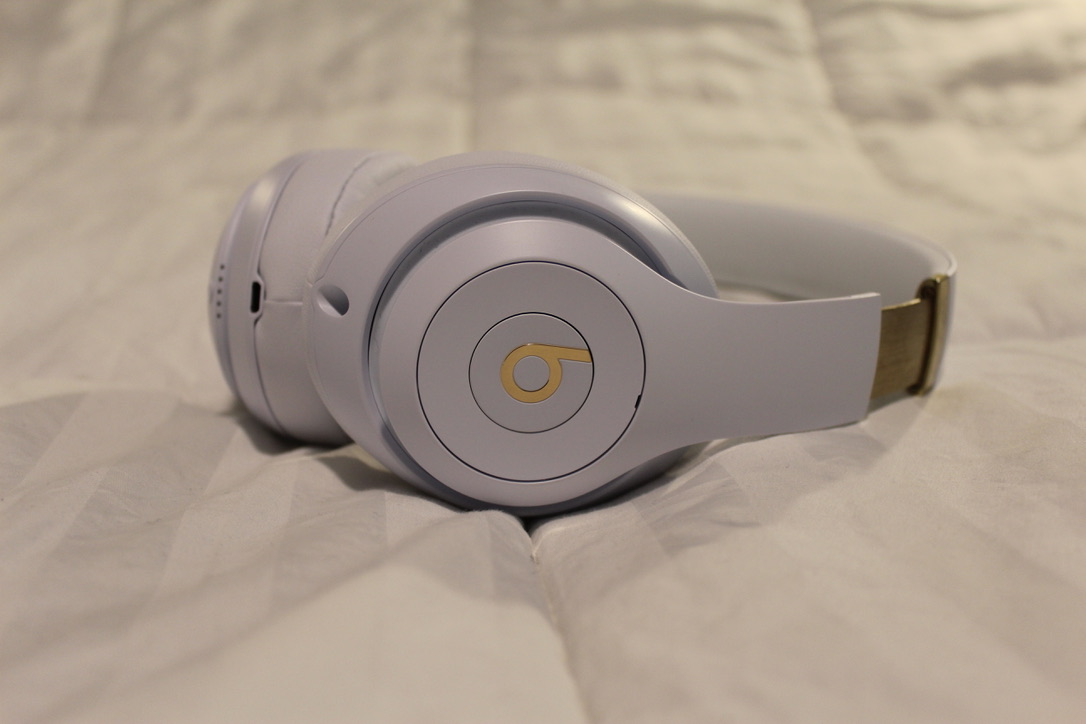
Truthfully, gold is not my favourite colour by any means. I find it garish. However, I chose a pair of headphones with the golden tint because I generally prefer my headphones to be a more neutral colour — white or black is best — that can go with whatever outfit I’m wearing on any given day, be it a day in which I’m dressed in a shirt and tie, or t-shirt and jeans, and most of the neutral colour options include gold plated chrome as the standard option.
The Beats Studio³ Wireless headphones come in seven colours, all of which look generally attractive, though, to my “neutral colour” preference, there were only three real options: Matt Black, Shadow Grey, and White. Since I owned at the time of purchase a silver aluminum iPhone 5S, with a white bezel front, I went with the matching white/gold option. (Within a few months, I upgraded to a jet black iPhone 7, but the headphones look good regardless of what colour your phone is.)
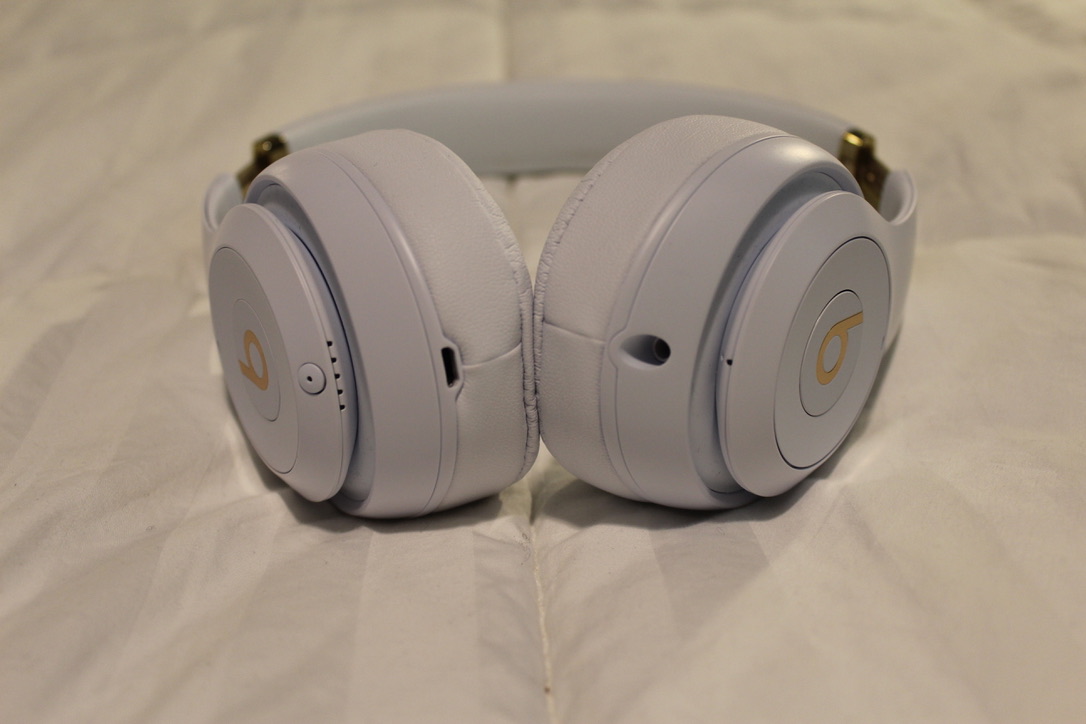
The headphones are comprised primarily of three materials: plastic, leather, and chrome. People often have a negative opinion about plastic, but it is more of a failure of design than of material when a plastic product appears cheap. The Studio³’s do not appear cheap, despite their plastic, and instead look well-crafted and finely manufactured, while feeling comfortable in terms of heft in my hands, around my neck, or on my head. They are neither too heavy, nor too light.
The garish gold colour is limited only to the Beats logo on the earcups, and the chrome accent around the hinges of the headphones. The rest of the product is comprised of plastic and leather, which creates a very appealing visual look.
The business side of the earcups are a soft white leather which fit comfortably over my ears, while the exterior side is plastic, as is the band, though the interior side of the band is a soft rubber-like substance that was designed for the purpose of comfort while wearing the earphones atop one’s head.
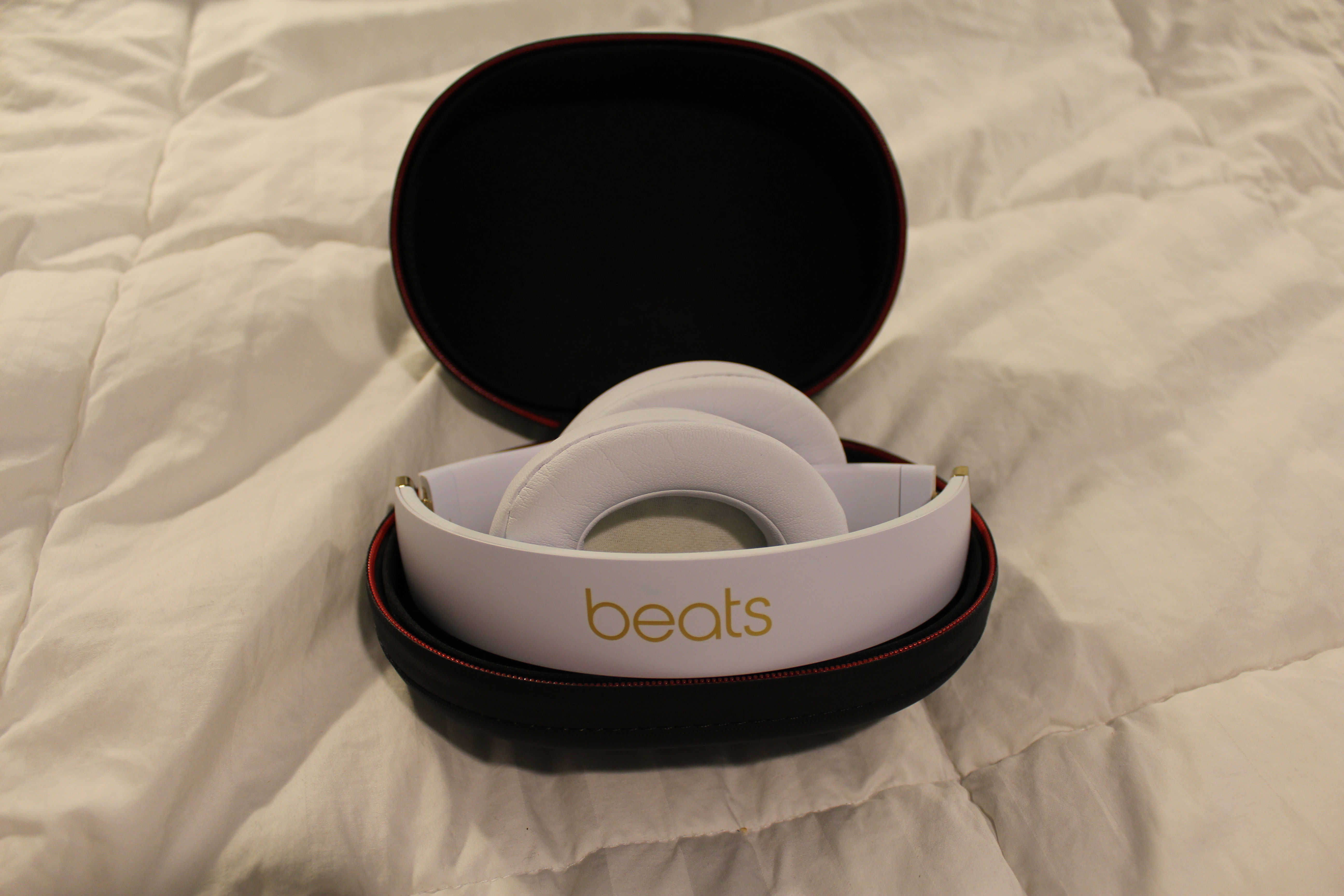
As far as portability goes, the Studio³’s are easy to wear around your neck, should you be so inclined for the sake of easy access, and they also fold neatly and are easily stored in any travel bag or backpack. Like all Beats headphones, the Studio³’s come with a hard shell black carrying container — the container itself is sizeable and firm, (and is also a dust magnet) and would noticeably take up a ton of space in any bag if utilized. But literally the only time I’ve ever used the shell has been for photos like the ones in this review. My headphones have frequently withstood the test of travel without the shell, which I’ve generally kept hidden under my bed, collecting dust.
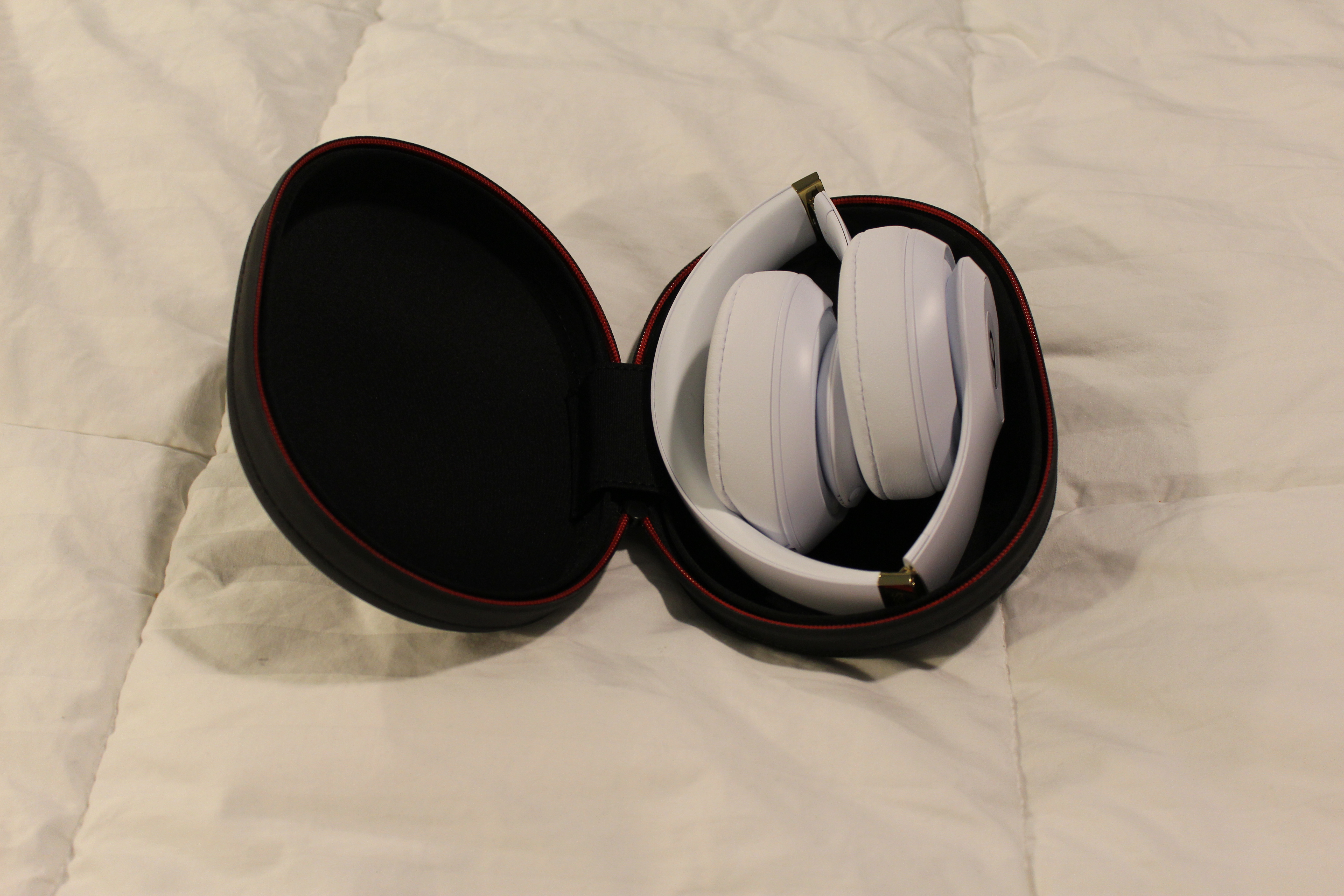
The Studio³’s also come with an audio jack, but considering the rarity of an audio port in most of the devices I own these days, I have never used it. The cord is white and attractive (in as much as a cord can be attractive). Despite the lack of use, the volume adjuster on the cord has discoloured a bit. I honestly don’t know why or how.
Lastly — the Studio³ also comes with a charging cord, albeit for micro-USB. By the time Apple designed these, they’d already begun building products for Beats that charged with lightning, and it would have been incredibly convenient for the Studio³’s to also require lightning to charge, but, nope, if you want to keep these charged on a long trip in which you might use them a lot, you’ll have to bring the extra plug and cable. That said, with a 22 hour wireless playback time with noise cancellation, or 40 hours with noise cancellation turned off, you might be able to take a pretty significant trip before needing to recharge these headphones.
The Sound
The Studio³’s come with Apple’s patented ANC (Active Noise Cancelation) which utilizes the W1 chip to regulate sound, rather than relying on the earphones themselves to cancel out the noise of the world around you. The ANC can be activated, or turned off, by two rapid presses of the power button on the right earcup.
The left earcup, meanwhile, is used to control the volume, allowing the listener to adjust by simply lightly pressing on the top or bottom of the ring around the Beats “b” icon. The “b” icon itself can also be used to play or pause the song to which you are listening.
So how do the Studio³’s actually sound? To my untrained ear, they sound great. Beats are known for having heavy bass. I don’t listen to a lot of bass-heavy music — my favourite band, the Avett Brothers, utilize a standing bass for most of their songs, but that bass isn’t the dominating factor in their sound. These headphones, though, sound crisp to me, even at higher volumes, though I tend to stick to below 80 decibels when I’m listening to something.
There’s something highly enjoyable about sliding under the covers, propping my laptop or iPad up on my stomach, and playing a fun movie while wearing the Studio³’s, as these earphones deliver an encompassing sound that leaves me feeling immersed — a must-have for home entertainment in my view.
The ANC provided by the W1 chip is noticeable, but only barely, depending on what kind of background noise you are attempting to minimize. As an example, I spend my workday in a room with two computer carts that are constantly making low noise due to their fans. When I put the Studio³’s on my ears, they naturally minimize the sound of the fans, though I can still hear them humming away in the background. When I turn the Studio³’s on and activate the ANC, the hum diminishes further, but it’s still evident — at least, until the music comes on. Once I actually use the Studio³’s as intended, the background sounds around me fall entirely away.
The Feel
As I’ve been writing this review, I’ve put a lot of thought into the order in which I discuss the headphones. Originally, I intended the feel of the Studio³’s to be the middle point of the review — but I realized something. For me, at least, comfort is even more important than sound. You could give me a pair of headphones that sound better than anything else on the planet, but if they were uncomfortable to wear, I would turn away from them quickly (though, not until I’ve listened to a few choice songs to see if I can pick up on anything I “missed” from using inferior headphones).
I’m sure there are people out there who scoff at this priority, but think about it. Nothing can be the “best” if there is some kind of flaw in its design that detracts from the experience of using it. With headphones, there is nothing more significant than the comfort of wearing them, as ear fatigue is a real thing, at least for me.
The Studio³’s are designed to be comfortable. The leather pads on the earcups are soft and high quality, although using the headphones will ultimately cause wear. I actually had to replace the leather pads on my Studio2’s, which was an unpleasant experience that marred the attractiveness of the headphones by the time I was done.
Additionally, wearing the Studio³’s for a while will, at the very least, certainly cause your ears to sweat. I can imagine that if I wore them frequently, and sweated as I am inclined to do, then there’s a risk at the very least of discolouration as time went on, though I haven’t noticed any on the earphones to this point (and I’ve owned these for a while).
No, the biggest problem I have with the Studio³’s is that for my ears they just aren’t comfortable enough to use as I would like to use them. Maybe it’s just me — on my ear, the antihelix sticks out perhaps a bit more than it does for most peoples’ ears, and wearing these headphones for too long can cause that part of my ear to feel sore. Sometimes I can wear the Studio³’s for hours. Other times, I struggle to wear them for more than 30 minutes. But when I bought them, in my mind I had hoped to use them as my designated “media consumption” headphones — I’d wear them when trying to immerse myself in music, TV, or movies. Unfortunately I just haven’t been able to use them that way, as I tend to experience discomfort midway through whatever I’m trying to watch or listen to, forcing me to switch to in-ear earphones, such as my wired EarPods, or my wireless AirPods Pro.
Conclusions
If you want a pair of luxury headphones that look beautiful, sound good, offer seamless connectivity to a variety of Apple products, and can be used wirelessly, then the Studio³’s are… an option you should consider. I know, not exactly a glowing recommendation. But keep in mind that listening to music is an incredibly personal experience, and that most audiophiles out there would direct you toward higher quality products, like the Sony WH-1000XM4’s (or earlier iterations), which undeniably offer the best listening experience, as well as the best noise cancellation for its price point on the market right now.
As far as cost goes, the Studio³’s can be bought on Amazon for around $200. The 1000XM4’s sell on Amazon (and Sony’s site) for nearly $100 more. Choosing to buy an expensive pair of headphones is a personal decision, and only you can determine if the sound is worth the money.
That said, while I do like the Studio³’s overall, I almost never use them at this point. Any attempts to acclimate my ears to the discomfort was abandoned after Apple released the AirPods Pro, which have an incredible sound while fitting very comfortably in my ears. I am likely to sell my Studio³’s in the near future, as they are otherwise mostly just collecting dust sitting around my house.
But I haven’t abandoned my hope of finding the perfect pair of headphones, and will soon be turning my attention to the AirPods Max — which will likely be the last pair of headphones I ever buy, as either my search will end satisfactorily at that point, or I’ll just have to accept the sad fact that headphones just aren’t for this giant head and protruding antihelixes.
